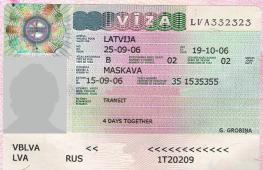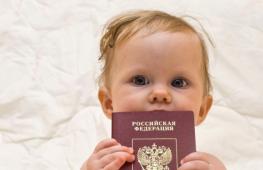What is population migration: types, causes, consequences
The number of migrants in the world is growing. People do not want to live where they were born, they are looking for better conditions. States are worried: some lack the labor force, the population, while others, on the contrary, are overpopulated. To maintain the demographic balance and control the situation on the labor market, it is necessary to know what migration is, what are its causes and what the consequences may be.
Definition
Causes
In general, the factors influencing the process can be divided into attractive and pushing ones. They go either to something good or from something bad. The push-out ones include armed conflicts, wars, environmental disasters. In such cases, people simply have no choice - forced emigrants save their lives and health.
The main factors that force people to pack their bags are economic. Most migrants travel to another region or country in order to find higher-paying jobs. But that's not the only reason people get on the road. Many of them want not only to earn money, but also to stay in their new country forever. Irretrievable migration is stimulated by various benefits and advantages.
A mild climate, a high standard of living, reliable social protection, the presence of political freedoms, the opportunity to get a good education can attract in other regions or countries.
Classification
Such a complex phenomenon can be viewed from different points of view. Accordingly, the types of population migration are classified according to various criteria:
- territorial;
- temporary;
- by the way of implementation;
- causal.
In addition, the process can proceed with the violation of the law and without it. Legal migration is just the tip of the iceberg: according to experts, illegal immigrants account for most of the total migration flow.
External and internal
Migration within a country or another territorial unit (district, region) is called internal. The population flows from the countryside to the cities, from one region to another. Migration processes do not include only the resettlement of people within the same settlement.
External migration is associated with crossing the state border and is subdivided into emigration - the outflow of the population, and immigration - the influx of foreigners into the country.
In turn, it can be intracontinental and intercontinental. The difference between the arriving and departing population is called the migration balance, which can be either positive or negative. Negative migration is a phenomenon where the number of emigrants exceeds the number of new arrivals.
In many developed countries, the birth rate is declining, which leads to an aging population and a general demographic crisis. Replacement migration, when the natural decline is compensated by the influx of foreigners, can keep the population at the same level. 

Transit migration is the movement of migrants across the territory of a state on the way from the country of origin to the country of arrival. The phenomenon of such a transit is typical for countries bordering on more prosperous recipient states. For example, the flow of foreigners from Asia rushes to Europe through Russia, Belarus and Ukraine. Illegal migrants from African countries tend to Germany or Sweden, but for this they need to cross the territory of Turkey and Greece in transit.
By duration
According to the amount of time spent by a migrant abroad, temporary and permanent migration are distinguished. Temporary migration is resettlement to a country on conditions that imply that after a certain period of time, the migrant must return home. The aim of temporary migrants is not to find a new place of residence, but to find a well-paid job. The most short-lived is the so-called pendulum migration, when trips to the place of work or study and back are made regularly, every day. This happens in villages close to large cities, as well as in border areas.
Seasonal migration is a phenomenon in which the stay of a foreigner in the country is associated with the performance of seasonal work and lasts no more than a few months.
Typically, these workers are employed in agriculture, and although they are likely to renew their contracts after a year, they need to return to their home country after the end of the harvest.
Short-term migration lasts longer - up to one year, as long as the contract signed with the employer is valid. Long-term migration assumes that a specialist will work in a foreign land from one to several years.
Social reasons include the desire to change your level and lifestyle. This, for example, moving from a village to a big city, entering a foreign university. Immigration through education is one of the most common ways to change your country of residence. This also includes family reunification, moving to the place of residence of the future spouse.
Cultural reasons encourage believers to make annual pilgrimages to holy places, and re-emigrants to return to where their ancestors used to live.
Political migrants - refugees - are persecuted and repressed in their homeland for their beliefs. Political migration was widespread during the Soviet era, when dissent was punishable.
If armed conflicts are driven out of their homes, we are talking about military migration. These are refugees who are threatened not by the political regime, but by shelling and bombing.
Effects
What do migration processes lead to? The consequences of the phenomenon, like the causes, affect many aspects of life. First, the economic situation is changing.
They receive additional reserves, which accelerates the rate of economic growth, makes labor cheaper, and in case of saturation of the labor market, leads to an increase in unemployment.
That is why in many countries there is a strict professional selection and quotas: so that only those who will be in demand come.
In places where there is an outflow of the population, the pace of development slows down, but unemployment rates decrease. Permanent migration can change the demographic picture - newcomers join the ranks of the able-bodied population. A large number of migrants of the same nationality can also change the cultural environment of the region - language, religion, traditions, if assimilation does not occur - complete dissolution among local residents.
Migration Problems and Solutions: Video



